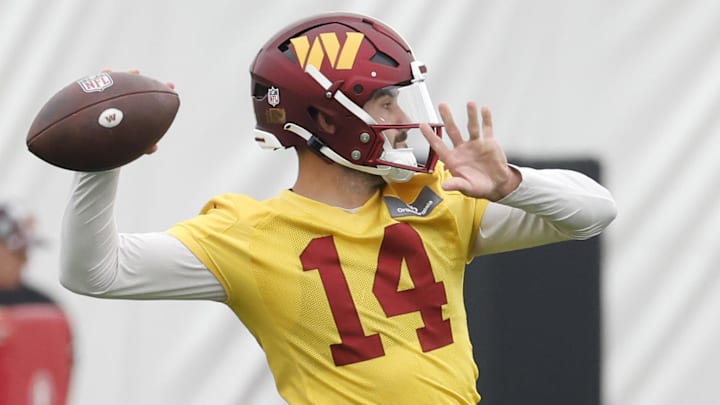Does history favor Commanders QB Sam Howell?
Let’s take a brief tour through recent NFL history. We’ll look at a few Washington Commanders' examples and a few league-wide.
The red lights began flashing for Dwayne Haskins when he posted an abysmal 12.5 sack percentage in his rookie season. He did improve to 7.7 by his second year, but that is still well below average.
Taylor Heinicke, in his full season as a starter (2021) was somewhat better at 7.1. There are a couple of exceptions, but leaguewide, that suggests a fairly mediocre quarterback – which is pretty much what he is.
If you argue that this isn’t a fair comparison because they played with different teammates, we can solve that by going back a little further in the Commanders' history. In 1994, rookie Heath Shuler had a very good 4.3 sack percentage. But his rookie counterpart Gus Frerotte was much better at 2.9.
The following season, Frerotte did go up to a still-solid 5.5 while Shuler ballooned to 9.4 By the end of two seasons, it was clear who was the better player.
Go back to 1987, during the glory days. The original starter Jay Schroeder posted a 6.7 sack percentage. That’s pretty good, but it is diminished a bit by the fact that Washington had an excellent offensive line.
How do we know that? Because the man who eventually replaced Schroeder – Doug Williams – had an elite 4.7 playing with that same line. Guess which signal-caller Joe Gibbs wanted come playoff time? The one who didn’t take as many sacks.
Still not sold? This century, the only quarterback Washington has produced who's had long-term success is Kirk Cousins. In his first full year as a starter, the Michigan State product had a 4.6 sack percentage. As you know by now, that is excellent.
Do not confuse the sack percentage number with a good or bad individual season. Robert Griffin III had a brilliant rookie season with a mediocre 7.1 sack percentage. The following year, when the first-rounder and Cousins were both in their second seasons – and playing in the same scheme behind the same offensive line – he regressed to a 7.7 while his teammate posted an outstanding 3.1.
As with Frerotte and Shuler, the less-hyped player grew into a legit NFL quarterback while the top-three draft pick quickly disappeared from the league.
